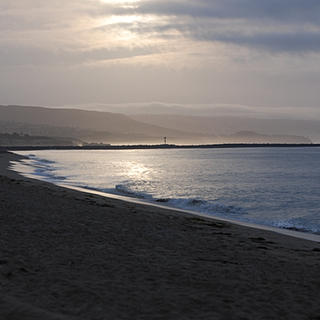A Conservation Success Story: California Condors
- OC Habitats
- Sep 7, 2020
- 3 min read
Updated: Sep 16, 2020
If you have been lucky enough to see a California condor, in the wild or even a zoo environment, you have experienced the power that the Endangered Species Act (ESA) has had in the world of wildlife conservation. Established in 1973, the ESA was signed into law by the Nixon Administration in the height of the modern environmental movement to protect other species from suffering the fate of extinction.

For the case of the California condors, their threat was rooted in their feeding habits. Condors, like other vultures, are scavengers which means they only eat carrion (or dead animal remains). This plays an extremely important role in their ecosystems which range from coastal beaches to mountains to desert canyons. As they soar through these habitats, they act as a “clean up crew” to rid the environment of bacteria and diseases associated with the decomposing carcasses. Their bald heads are even presumed to be an adaptation for them to stay hygienic while digging into their next meal as it helps them avoid debris from rotting in their feathers!
However, when the sport of hunting intersected with their feeding, it had detrimental consequences. While lead bullets are now banned in the state of California, their rampant use in the mid 1900s caused a severe decline in the condor population as the consumption of the bullet fragments in carcasses caused deadly lead poisoning. Additionally, being a flock species meant if one was eating more always came to join in on the feast. Their population fell to such an extreme that in 1982 the decision was made to capture all remaining 22 individuals to begin an extensive recovery program.
Yes, you read that correctly -- only 22 California condors remained.
The U.S. Fish and Wildlife Service partnered with many organizations to help bring the California condor population back to life. But what goes into such a critical conservation program?
For the case of the condors, it began with captive breeding to prepare for eventual release. Zoos such as the Los Angeles, San Diego, and Santa Barbara Zoos helped take part in this program by becoming breeding and housing facilities which allowed for the optimization of breeding pairs through genetic analyses. They also played roles in outreach and education which are critical aspects of any conservation program.

The release of condors back into the wild began in 1992, which followed with routine monitoring of movement (through tracking devices), breeding and population growth, and biannual lead testing. If an individual was found to have high levels of lead, they were then taken to a facility for chelation therapy which removed the heavy metals from their bloodstream. But, handling these birds with a 9-10 foot wingspan is no walk in the park. It is more so a rappel down a cliff -- which field biologists often do to monitor nests and egg viability.
Almost 40 years later, and the Condor Recovery Program is in its final phase which focuses on creating self-sustaining wild populations. As of 2019, there are over 300 wild condors soaring between California, Arizona, Utah, and Baja California. They have even been spotted in Sequoia National Park for the first time in half a century, which is a monumental milestone for a species that was on the brink of extinction.
While the initial decision to begin such an extreme and experimental recovery program was a controversial one, the hard work and the hope held for this majestic species has paid off. Even beyond this one species, the knowledge they learned through these efforts will only aid in the recovery of species to come.







Comments